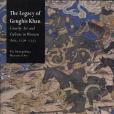內容簡介
In the 13th century, under the leadership of Genghis Khan, nomadic horsemen burst out of Mongolia and began their sweep across Asia, creating the largest empire the world has ever known. Particularly in China and Iran (Persia), the results were far-reaching: the Mongols imposed enormous changes but were also influenced by the highly developed civilizations of their new subjects...(展開全部) In the 13th century, under the leadership of Genghis Khan, nomadic horsemen burst out of Mongolia and began their sweep across Asia, creating the largest empire the world has ever known. Particularly in China and Iran (Persia), the results were far-reaching: the Mongols imposed enormous changes but were also influenced by the highly developed civilizations of their new subjects. During the century they ruled Iran - the period of the Ilkhanid dynasty (1256 to 1353) - the Mongols adopted Islam and sponsored a brilliant cultural flowering that encompassed many branches of the arts and transformed local Persian artistic traditions. This volume, which focuses on the Ilkhans and their culture, features some 200 extraordinary objects in colour, including manuscript paintings and illuminations, ceramic tiles, metalwork and textiles. Essays by eight scholars provide the historical and political background and address such subjects as the art of the book, religious art, and the transmission of designs across Asia. Linda Komaroff is Curator of Islamic Art and Department Head of Ancient and Islamic Art, Los Angeles County Museum of Art. Stefano Carboni is Associate Curator of Islamic Art, The Metropolitan Museum of Art.

